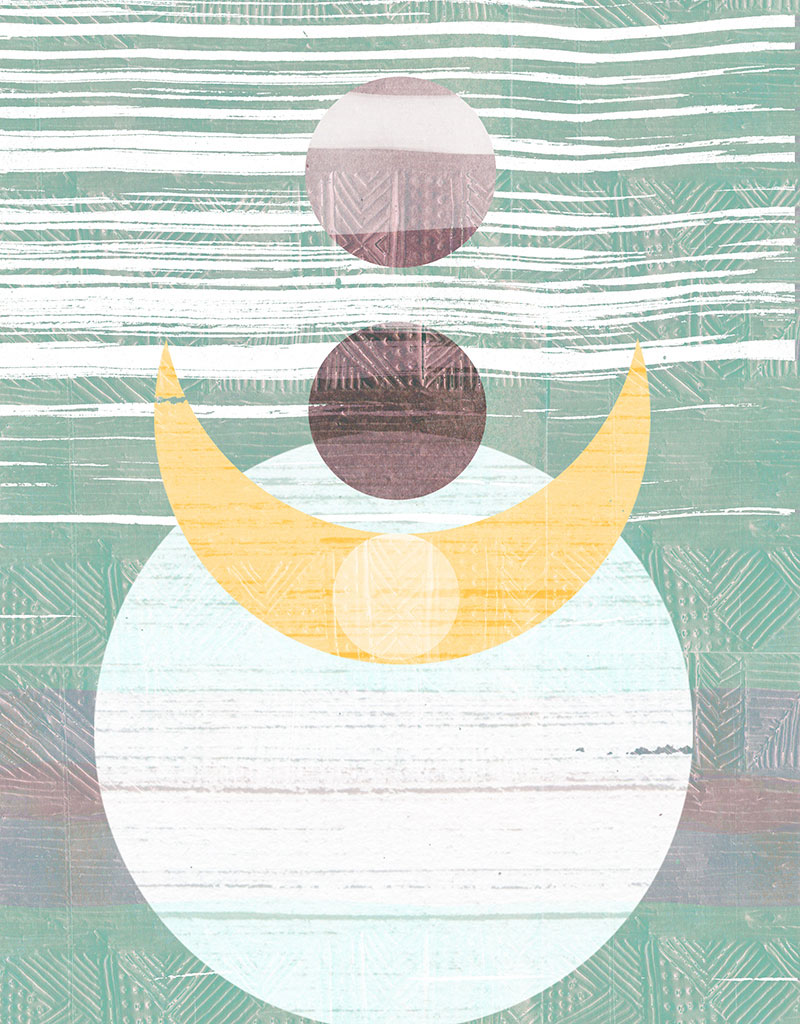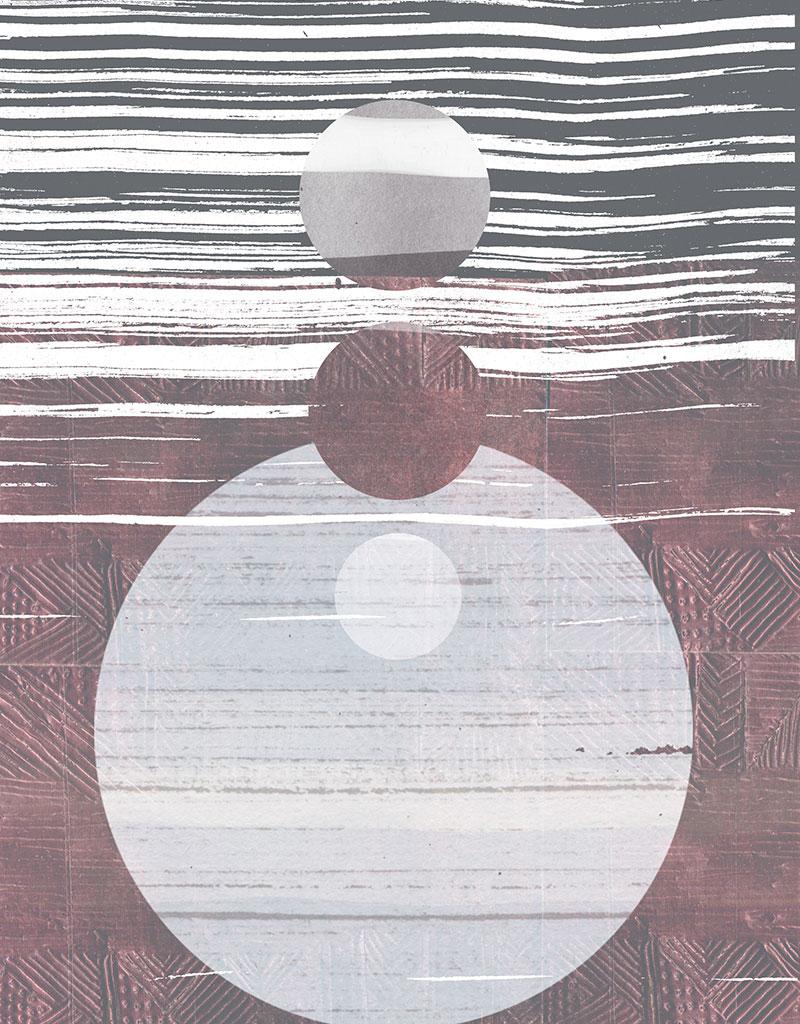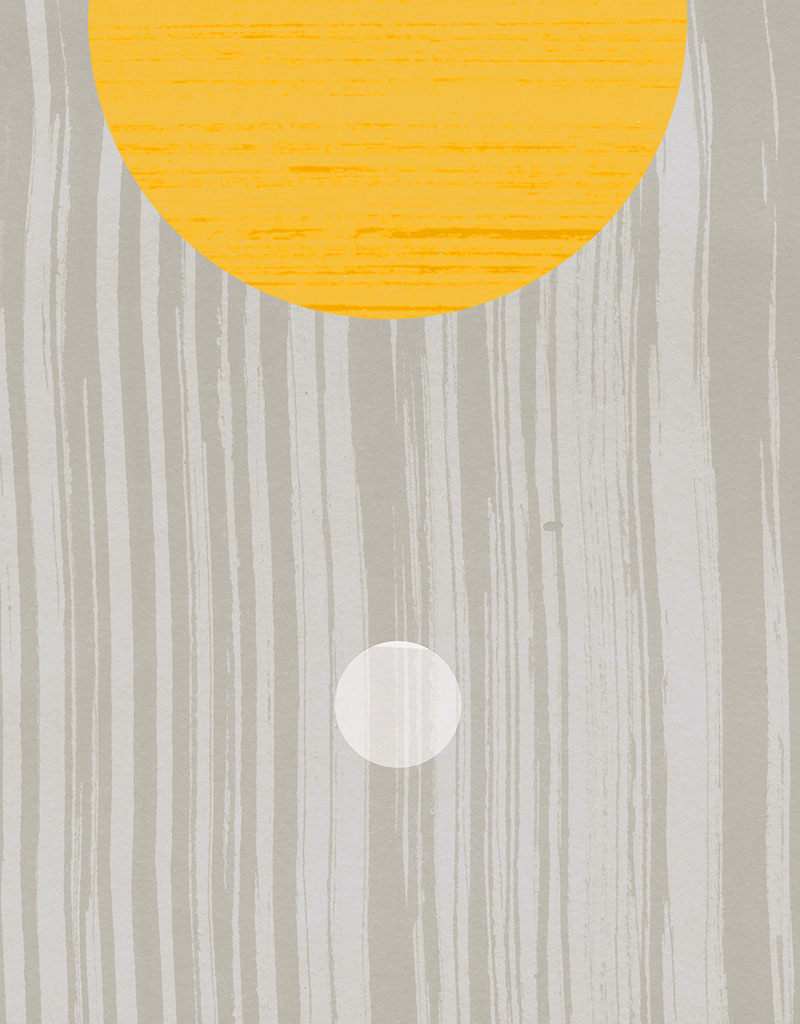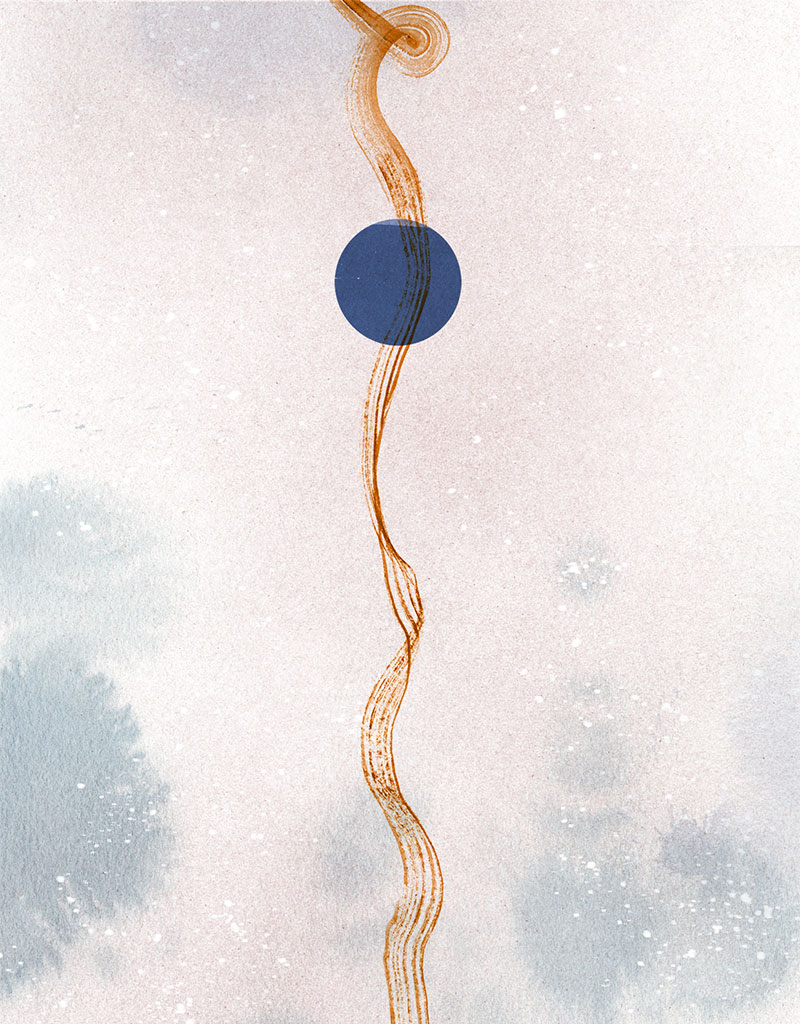Nilakshi Sharma
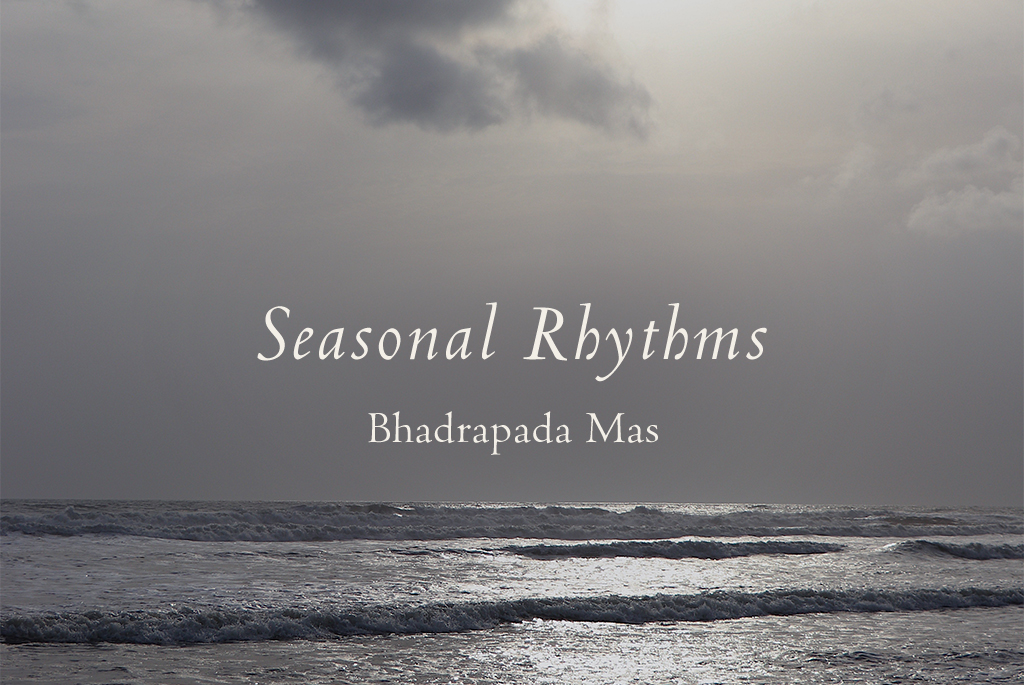
Water is vital for life; according to many mythologies and science life begins in water. And Bhadrapada, the second month of Varsha rtu, is the month of water. It fills the skies as swirling grey, water-laden clouds, it brims over banks and overflows on the earth. It seeps into everything and saturates the very air with moisture. In this overwhelming, water-logged earth there is the exquisite beauty of a rain-washed world of jewel toned green vegetation.
The arrival of Varsha rtu accompanies the start of the second half of the solar year – Dakshinayana, which is characterised by feminine energy and the fluidity of water. In this season of water and the Moon dominant half of the year we all feel the loss of the Sun’s energy and agni.
We feel the effects of this most keenly in our bodies – in our skin and our digestion.
Due to the overwhelming presence of water, our digestive agni is at its weakest in this season. Our skin is also more prone to skin infections and irritations during this time.
Nurturing Agni
Ayurveda offers two simple practices to nurture our inner agni. The first is through a tisane made of spices that encourage our digestive fires. The second is a self-care ritual that encourages the elimination of toxins but more importantly, awakens and activates our skin, which is our body’s first line of defence.
Agni Drink: 1 tsp ground Cumin + ½ tsp freshly ground Pepper (or long Pepper for Pitta dominant constitutions) + 2 to 3 pinches of ground Ginger + 1 pinch of Rock Salt.
Add the spices to 1 cup of water in a saucepan. Bring to a boil and then simmer for 10 minutes. Cool and drink approximately 30 to 45 minutes before your meals. This recipe is from the Sivananda Yoga Vedanta Centre.
Dry Powder Massage: As per Ayurvedic wisdom, “Dry powder massages are heating, stimulating, and dehydrating, making them beneficial for weak agni and excess Kapha.” You can use Triphala powder for the dry massage as it is tri-doshic or you can make your own dry powder for body massage. The Sivananda Centre’s recipe for a dry massage powder: 300g Chickpea flour + 2 Tbsp dried Basil + 2 Tbsp dried Sage + 1 Tbsp dried Neem leaf powder + 1 Tbsp Shallaki powder (optional) + 1 Tbsp Amlaki or Triphala powder + 2 Tbsp Rock Salt (finely ground). Mix well and store in a glass jar in a dry place away from light.
To practice: Take as much of the dry massage powder as needed to gently massage your entire body. Post massage rinse body with lukewarm water and pat dry. Avoid the use of soap.
Caution: Body massage should not be done immediately after eating a meal. Either wait a few hours post meal or do the massage when your stomach is empty.
Rituals of Self Care
Some simple, traditional practices can be very beneficial in this season of excess water. The first is a way of keeping our skin healthy and nurtured. The second is a practice that allows us to invite the energy of agni into our lives in this time of water. We often overlook the fact that sight is one of our most vital indriyas or senses. What we see is also, in a way, what we consume and what has a deep impact on our body and mind. Thus, flame gazing can be a simple but potent ritual of self care that also invites the sacred energy of fire into our lives.
Salt Body Scrub: A weekly or bi-weekly bath with a fragrant salt scrub during this month can keep our skin moisturised, glowing and infection and irritation free. Salt in traditional practices is also a way of cleansing and nurturing your energy. So, the use of a salt scrub for the body can also be a grounding and refreshing experience for our mind and energy.
Take a handful of good Sea Salt that has been coarsely ground. Add organic Coconut oil generously to make a soft paste. You can also opt to use Mustard oil. It is a potent warming oil. For fragrance add a few drops of your favourite essential oil.
To use: Scoop a generous handful and apply onto damp skin. Scrub in gentle circular motions and rinse off. Pat skin dry. Salt is antibacterial and keeps your skin infection free. The oil helps to moisturise your skin as well as ensure that harshness of the salt is softened enough to result in gentle exfoliation. The salt scrub is not recommended for use on the face.
Lighting a Lamp: Rituals of fire are amongst the oldest of humanity’s rituals of inviting the sacred into our daily life. It is at once an act of reverence and a moment of calm, when we can find the still point of the ever turning world. In fact, the act of lighting the lamp can become a beautiful, calming ritual. There is a soothing peace in gently hand rolling a cotton wick, placing it in the earthen or metal diya, filling it with oil and then lighting it. And then sitting in silence and just watching the flame of the diya is a simple yet powerful way of calming and centring the mind by inviting the energy of fire into ourselves and our life.
Festive Celebration
Varsha rtu is also the season of the longed-for union between lovers. Celebrated in the subcontinent as the time of lovers, this season and its months celebrate the mythology of mortal and immortal lovers alike. And in the pantheon of mythological lovers, Krishna and Radha occupy a unique place – theirs is the Ras Leela or celebration of love in all its playfulness, joy and eroticism set amidst the lush verdant offerings of nature. And it is in the month of Bhadrapada that their births too are celebrated.
There is a symmetrical beauty to their births; they are both born on the same tithi or the day of the Moon phase – the Ashtami or the eighth day of the lunar phase. But while Krishna is born in the waning phase that leads to the New Moon or Amavasya, Radha is born in the waxing phase that leads towards the luminous beauty of Purnima or the Full Moon. This year Janmashtami falls on September 7 while Radha Ashtami will be celebrated on September 23.
Alongside the love story of Radha and Krishna, Bhadrapada month also celebrates the fertility and fecundity of monsoon with the Teej festivals that are dedicated to the fruitful union of Shiva and Parvati, or rather Shiva and Shakti.
The Full Moon of Bhadrapada brings the month and the season of rains to a close.

